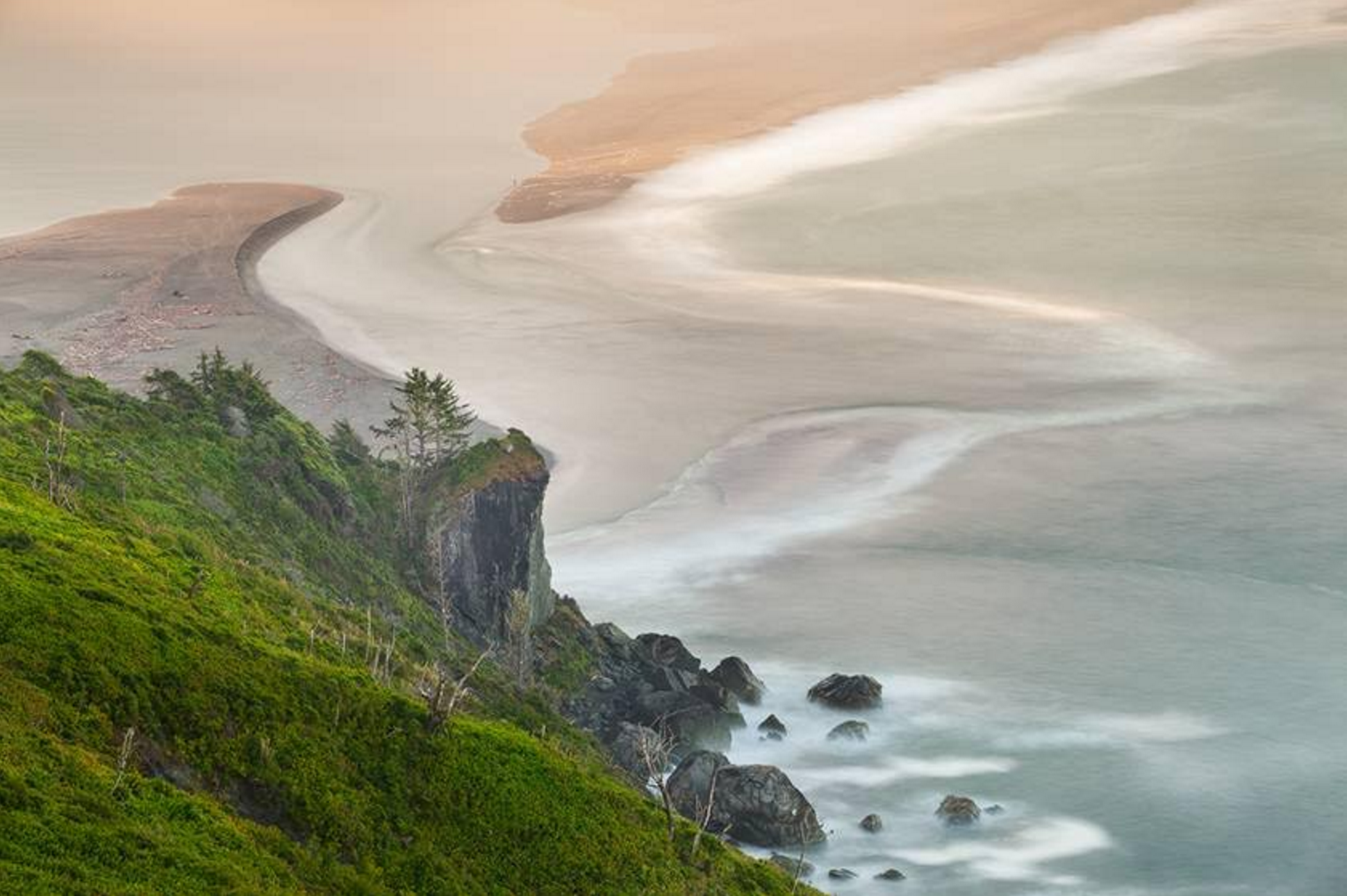
1. What was your path to become a photographer?
2. Do you prefer to photograph close to home or do you find faraway places more inspiring? Are there any special places that inspire you the most to create new work?
New places often inspire fresh ideas, certainly, but I’ve noticed that my best work is made in locations that are familiar to me because I naturally experiment more, having made all of the obvious compositions in the first few trips. For example, I spend a lot of time in Yosemite National Park, where one can easily locate the tripod holes for all the famous photographs. However, the challenge for me is to try to express something different about the place outside the obvious, and that’s where real creativity begins to happen and my most meaningful work is made.
New places often inspire fresh ideas, certainly, but I’ve noticed that my best work is made in locations that are familiar to me because I naturally experiment more, having made all of the obvious compositions in the first few trips. For example, I spend a lot of time in Yosemite National Park, where one can easily locate the tripod holes for all the famous photographs. However, the challenge for me is to try to express something different about the place outside the obvious, and that’s where real creativity begins to happen and my most meaningful work is made.
3. Are you a meticulous pre-planer or do you prefer creating images spontaneously? Do you revisit your favourite places many times to achieve the required result? Can you tell us more about your method of working?
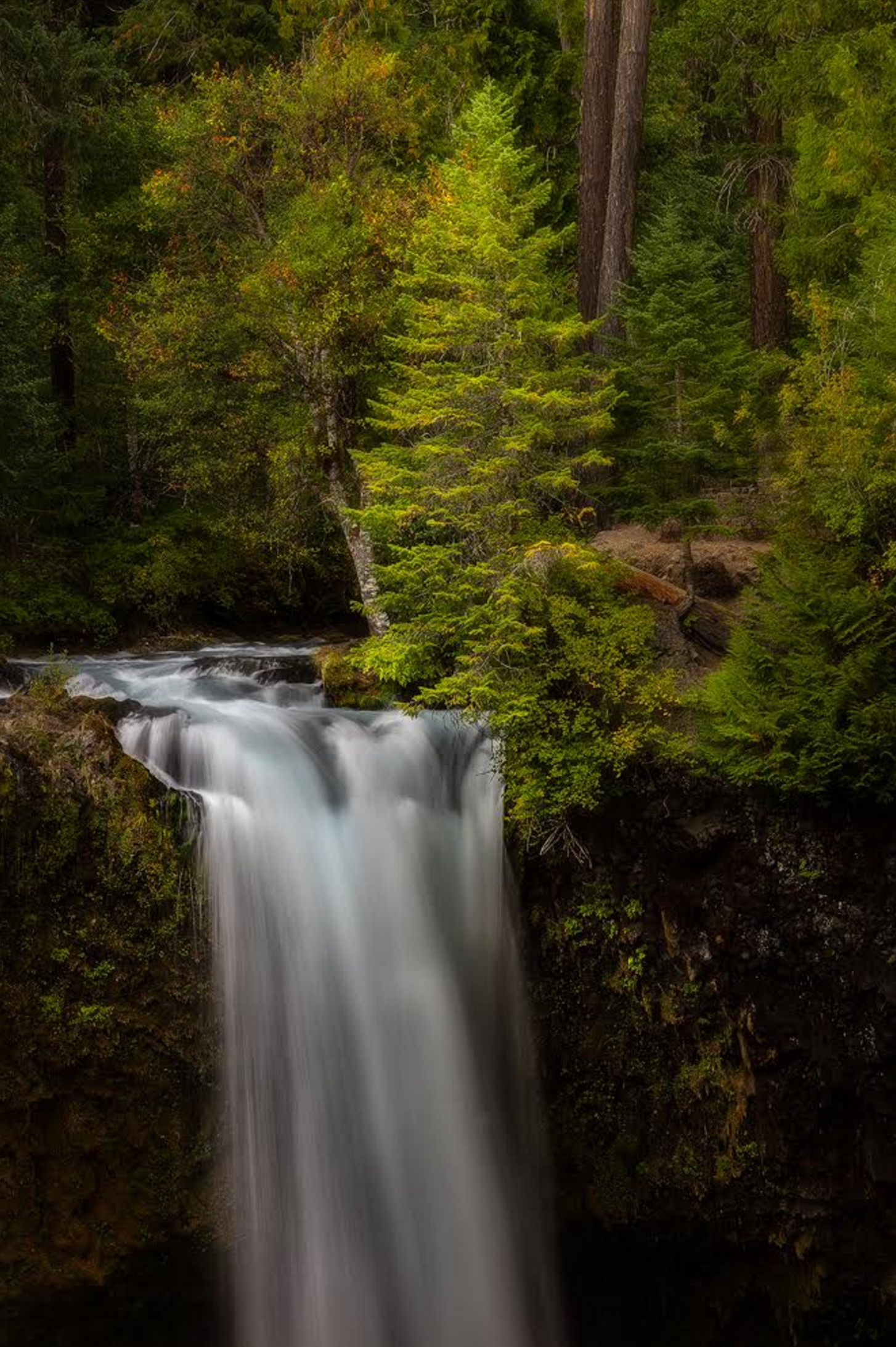
4. Terra Quantum displays themes and series portfolios; do you like working to the project/series/theme or find creating individual images more rewarding?
These days, I prefer to work on a specific subject matter, and then dive deeply into it artistically. I find this approach much more satisfying than making individual images, allowing me to stretch out creatively through exploration and experimentation. Although a single image can tell a story, I find a series of related images more compelling.
These days, I prefer to work on a specific subject matter, and then dive deeply into it artistically. I find this approach much more satisfying than making individual images, allowing me to stretch out creatively through exploration and experimentation. Although a single image can tell a story, I find a series of related images more compelling.
5. Can you tell us a bit more about your 2 chosen photographs – what is the story behind them, when/why/how they were created?
Certainly! My first image is titled “Portal.” During a trip to Arches National Park in Utah, a rare Spring storm had saturated the region the day before, which left nothing but puddles in a rock-bottom creek bed. The puddles reflected the monument in the background with a pink, sunrise sky, which was by itself striking, but I found that by zeroing in on just the puddles, the scene took on quite a different feel, as though one might step into a pool and fall through into another dimension. Technically, this photograph proved challenging to make. With the camera low to the ground, the focal distance was too great to keep the entire image in focus from near-field to the back edge. The final result is actually a compilation of six images, focus-stacked manually in Photoshop so that the image is tack-sharp, front to back.

The second image, “Eastern Sierra Enchantment,” is one that I made in the mountains of California in late October, long after the peak of the Fall color had passed. I have photographed this canyon with its meandering creek many times because of the abundance of Aspen groves and the beautiful bounce light there. In the Fall, Aspens put on quite a color show and photographers flock to this area. I actually prefer to photograph Aspens when they are a bit past their peak because it allows the bones of the trees to show through, giving the composition structure and form. This image was made with a single exposure, which proved challenging because of the high contrast values in the scene — the foreground was in bright, morning sun, and the forest was still in shadow. It was a very cold early morning, and there was still frost on the grasses, which was creating some specular highlights. I was able to knock those down with a polarizing filter. I had originally composed the scene to include the entire trees, their tops catching the first bits of light from the rising sun, but instead decided to focus on the most interesting part of the scene — the bare trunks and the bits of color still clinging to their bare branches.
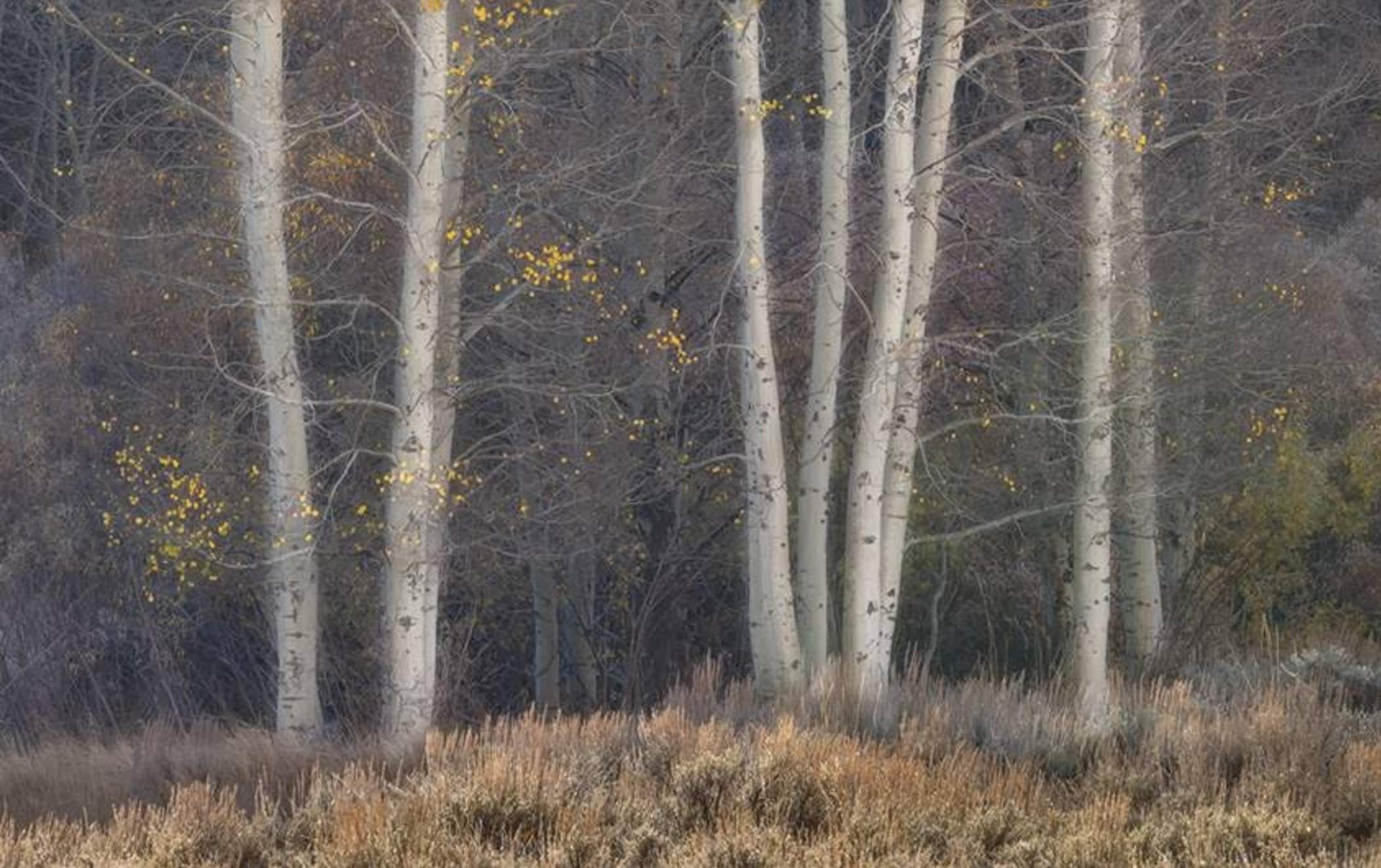
Certainly! My first image is titled “Portal.” During a trip to Arches National Park in Utah, a rare Spring storm had saturated the region the day before, which left nothing but puddles in a rock-bottom creek bed. The puddles reflected the monument in the background with a pink, sunrise sky, which was by itself striking, but I found that by zeroing in on just the puddles, the scene took on quite a different feel, as though one might step into a pool and fall through into another dimension. Technically, this photograph proved challenging to make. With the camera low to the ground, the focal distance was too great to keep the entire image in focus from near-field to the back edge. The final result is actually a compilation of six images, focus-stacked manually in Photoshop so that the image is tack-sharp, front to back.
The second image, “Eastern Sierra Enchantment,” is one that I made in the mountains of California in late October, long after the peak of the Fall color had passed. I have photographed this canyon with its meandering creek many times because of the abundance of Aspen groves and the beautiful bounce light there. In the Fall, Aspens put on quite a color show and photographers flock to this area. I actually prefer to photograph Aspens when they are a bit past their peak because it allows the bones of the trees to show through, giving the composition structure and form. This image was made with a single exposure, which proved challenging because of the high contrast values in the scene — the foreground was in bright, morning sun, and the forest was still in shadow. It was a very cold early morning, and there was still frost on the grasses, which was creating some specular highlights. I was able to knock those down with a polarizing filter. I had originally composed the scene to include the entire trees, their tops catching the first bits of light from the rising sun, but instead decided to focus on the most interesting part of the scene — the bare trunks and the bits of color still clinging to their bare branches.

6. Colour, b&w or both? How do you decide about the elimination or inclusion of colour and why. When do you decide about it - in the field or during the post processing?
I have a strong affection for black and white photography because of my early work in journalism and consequent darkroom work. I still “see” in black and white, but I now lean strongly toward color. Occasionally, I will create a composition, knowing that the end result will be expressed in black in white, but more often I make those decisions in the post-processing stage. The decision to render an image in black and white vs. color depends on a number of factors. I first consider if the color in the image is adding anything to the composition or to the expression of the idea. If there is not a compelling reason to keep it, then I try converting it to black and white. Color can also detract from some compositions, making it overall confusing to the eye, in which case removing color can create an image with more impact.
I have a strong affection for black and white photography because of my early work in journalism and consequent darkroom work. I still “see” in black and white, but I now lean strongly toward color. Occasionally, I will create a composition, knowing that the end result will be expressed in black in white, but more often I make those decisions in the post-processing stage. The decision to render an image in black and white vs. color depends on a number of factors. I first consider if the color in the image is adding anything to the composition or to the expression of the idea. If there is not a compelling reason to keep it, then I try converting it to black and white. Color can also detract from some compositions, making it overall confusing to the eye, in which case removing color can create an image with more impact.
7. Do you find printing your images yourself as an integral part of image creation or do you use professional labs? How important is the choice of paper for you?
I consider the print to be the final expression of my art, and therefore I do almost all of my own printing. I start by making a small 8”x10” print, at which point I refine color and details. I may make a dozen of these, editing, refining, and reprinting until I’m pretty happy with the results. Then I make a larger print, do any final adjustments, and reprint it until I’m satisfied with the result. If that is my final size, then I stop there. In the occasion that I need to make a print larger than what my printer can handle, there is a local professional lab that owns the big brother of my printer, so once I’ve gotten my print exactly how I want it to look on my printer, I can give my smaller proof with all my settings to the lab and they can make an identical larger print for me. As for paper choice, I’ve experimented with several papers and settled on a fine art smooth paper because I prefer the softer tones and less intense blacks that define my work.
I consider the print to be the final expression of my art, and therefore I do almost all of my own printing. I start by making a small 8”x10” print, at which point I refine color and details. I may make a dozen of these, editing, refining, and reprinting until I’m pretty happy with the results. Then I make a larger print, do any final adjustments, and reprint it until I’m satisfied with the result. If that is my final size, then I stop there. In the occasion that I need to make a print larger than what my printer can handle, there is a local professional lab that owns the big brother of my printer, so once I’ve gotten my print exactly how I want it to look on my printer, I can give my smaller proof with all my settings to the lab and they can make an identical larger print for me. As for paper choice, I’ve experimented with several papers and settled on a fine art smooth paper because I prefer the softer tones and less intense blacks that define my work.
8. Do you think that social media is killing photography or playing an important role in promoting your work? How involved are you in your online presence?
This is a big question. Social media has certainly played a role in the commoditization of the stock photography business and in the devaluation of photojournalism. Instagram has been largely credited with fueling the popular photography movement, dulling audience perception between what is considered “professional” and what is “amateur” photography. Photography is increasingly becoming a popular hobby for millions of people, due in part to the ease of sharing images on the Internet. But, social media has also given professional photographers access to a broader audience, allowing them to connect directly with consumers, some of whom are amateur photographers. Many of these amateur photographers have never touched a professional-quality camera in their lives, but they are now discovering a passion for photography and they want to learn more about making better images, creating demand for on-line tutorials, workshops and e-books. That is just one example of how one professional photographer might see an obstacle while another sees an opportunity. So, no, social media has not killed the entire profession of photography, but, yes, it has severely compromised a couple of key sectors. Professional photographers have had to adapt to changing industry norms before, and we are seeing that again now. Using social media in order to promote one’s work and increase targeted reach is a huge part of that.
As for my own online presence, I maintain my own website, several social channels, and a blog. I enjoy getting to know my audience and learn about their lives and passions. Although I engage and stay connected to my followers and listen to what they have to say about my work, I try not to be swayed into making images I think will please them, but rather I concentrate on making images that please me.
This is a big question. Social media has certainly played a role in the commoditization of the stock photography business and in the devaluation of photojournalism. Instagram has been largely credited with fueling the popular photography movement, dulling audience perception between what is considered “professional” and what is “amateur” photography. Photography is increasingly becoming a popular hobby for millions of people, due in part to the ease of sharing images on the Internet. But, social media has also given professional photographers access to a broader audience, allowing them to connect directly with consumers, some of whom are amateur photographers. Many of these amateur photographers have never touched a professional-quality camera in their lives, but they are now discovering a passion for photography and they want to learn more about making better images, creating demand for on-line tutorials, workshops and e-books. That is just one example of how one professional photographer might see an obstacle while another sees an opportunity. So, no, social media has not killed the entire profession of photography, but, yes, it has severely compromised a couple of key sectors. Professional photographers have had to adapt to changing industry norms before, and we are seeing that again now. Using social media in order to promote one’s work and increase targeted reach is a huge part of that.
As for my own online presence, I maintain my own website, several social channels, and a blog. I enjoy getting to know my audience and learn about their lives and passions. Although I engage and stay connected to my followers and listen to what they have to say about my work, I try not to be swayed into making images I think will please them, but rather I concentrate on making images that please me.
9. Do you have any plans for exhibitions, books or any interesting projects coming? Can you tell us a bit more about your artistic plans for the next couple of years?
I am preparing now for a 2017 solo exhibit, “Mother Earth: a photographic exploration of the natural world through a woman’s eyes”, which will be installed at the Viewpoint Photographic Arts Center in Sacramento, California in September. I’m also collaborating with Visual Wilderness on making a series of photography tutorials. As for the next couple of years, I haven’t thought that far ahead, honestly. For the moment, I’m focusing on my work, taking on projects that interest me and seeing where that takes me.
I am preparing now for a 2017 solo exhibit, “Mother Earth: a photographic exploration of the natural world through a woman’s eyes”, which will be installed at the Viewpoint Photographic Arts Center in Sacramento, California in September. I’m also collaborating with Visual Wilderness on making a series of photography tutorials. As for the next couple of years, I haven’t thought that far ahead, honestly. For the moment, I’m focusing on my work, taking on projects that interest me and seeing where that takes me.
10. We are living on the most beautiful planet, yet it is over-burdened and over-polluted. As photography is an influential medium, do you use the power of your photographs to promote our Earth appreciation and environmental awareness? Any thoughts how photographers in general can become more involved in this important matter?
The environment is a great concern to me and should be a great concern to everyone living on this planet. Can a photograph persuade people to think differently about the environment? Certainly. Using photography to tell a visual story about our planet can be powerful and persuasive, so, as photographers, if we want to make a difference, we can seek out and create projects that send an environmental message. I routinely donate my work to causes that promote conservation and environmentalism and I encourage other photographers to do the same.
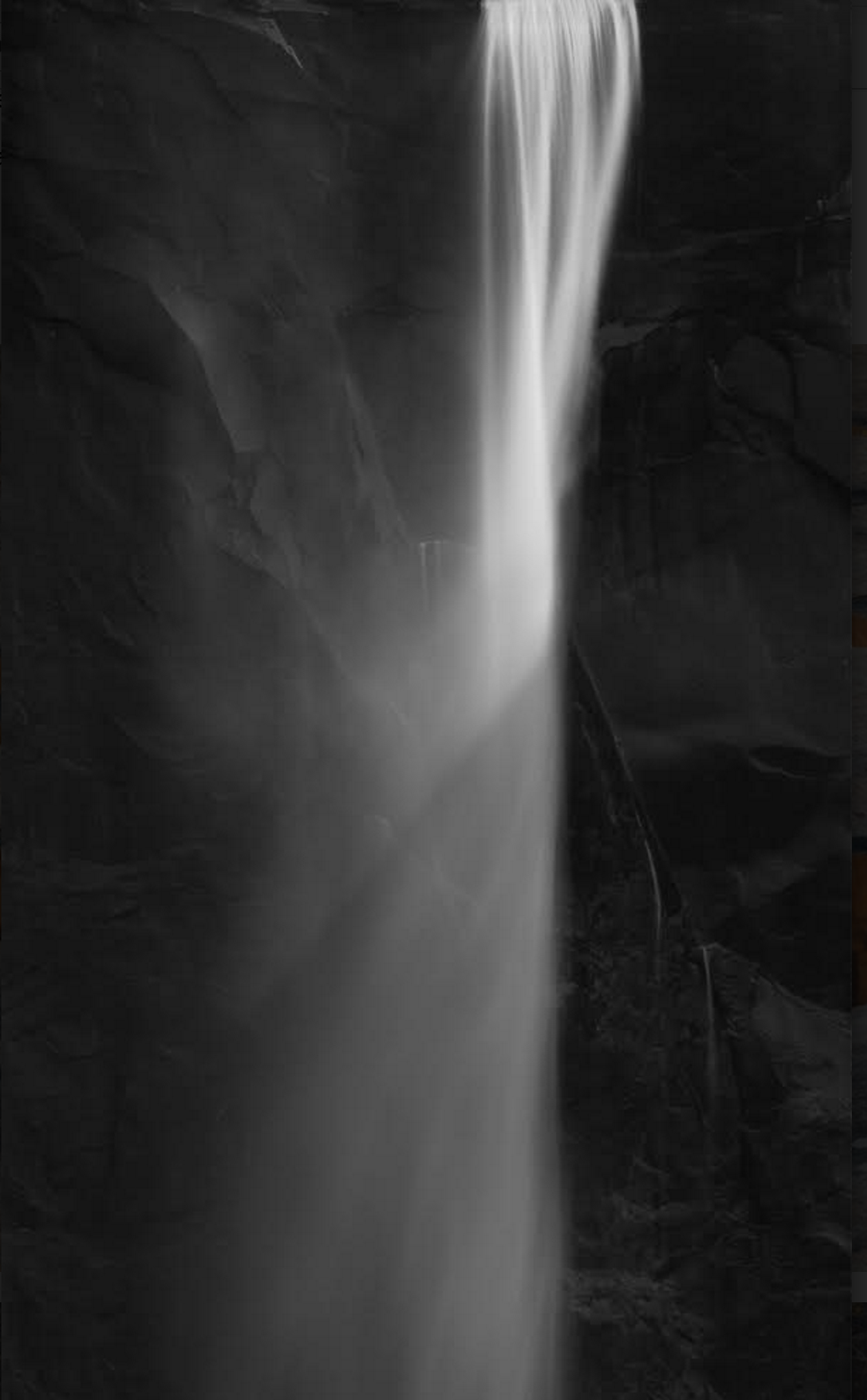
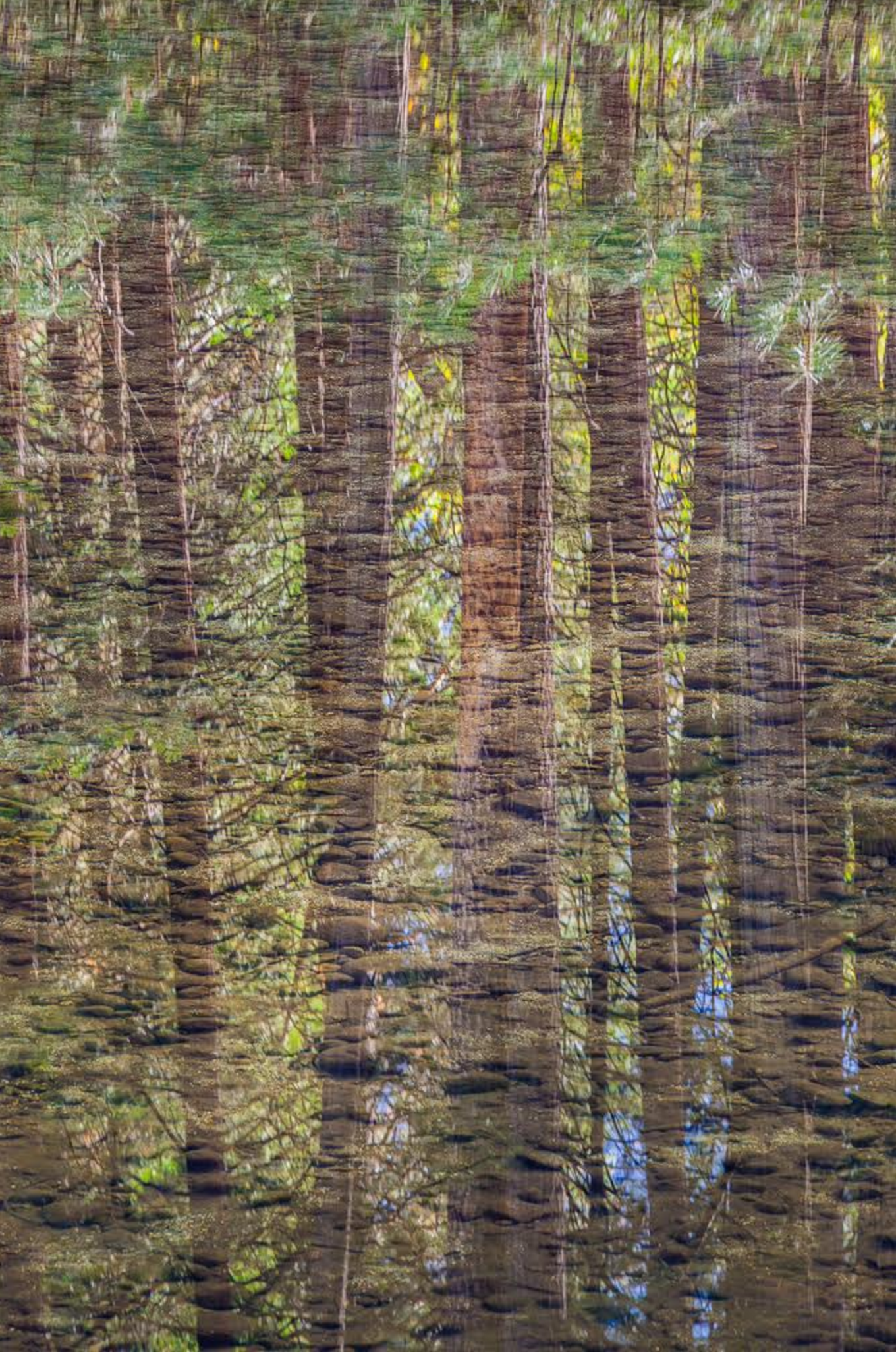
http://charlottegibb.com/
The environment is a great concern to me and should be a great concern to everyone living on this planet. Can a photograph persuade people to think differently about the environment? Certainly. Using photography to tell a visual story about our planet can be powerful and persuasive, so, as photographers, if we want to make a difference, we can seek out and create projects that send an environmental message. I routinely donate my work to causes that promote conservation and environmentalism and I encourage other photographers to do the same.


http://charlottegibb.com/

